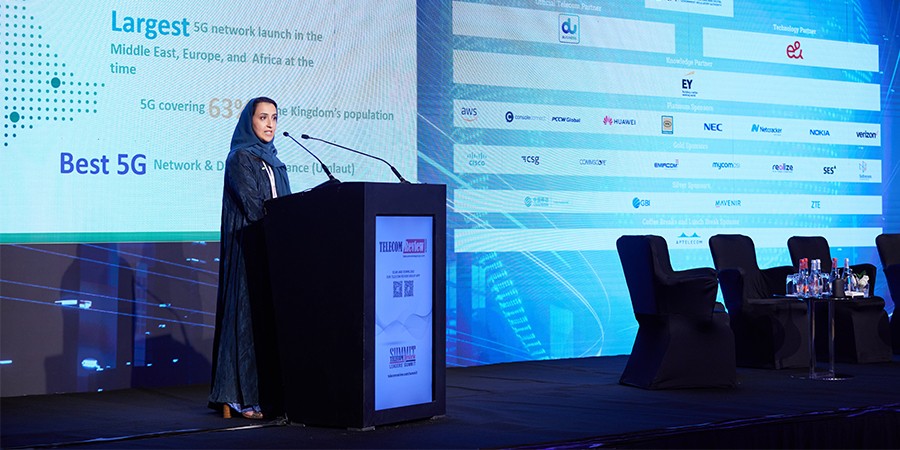During the second day of the 16th Telecom Review Leaders’ Summit, Maha Ibrahim AlQernas, business & fulfillment vice president, Zain KSA, delivered her keynote, discussing the telco’s transformation goals and the best practices for success.
Zain KSA has 8.6 million subscribers, covering 63% of the Kingdom’s population with 5G. “Zain’s transformation goal was extremely important to come up with new prospects in the market and to compete,” said AlQernas.
Their vision for a hyperconnected 5G world revolves around their evolution as a telco and their growth across verticals. These include digital transformation impacting enterprise and government customers and portfolio optimization with fixed and convergence connectivity.
Apart from ICT, Zain KSA is expanding its digital infrastructure, fintech and other digital services.
To continually lead the region in 5G presence, technology offerings and digital transformation, they are focused on digital upskilling and becoming a data-driven organization and digital lifestyle service provider. This is done alongside cloudification, superior broadband connectivity and establishing privacy and security as important pillars.
Zain KSA is also redefining customer experience for the 5G future. “We at Zain are taking the right measures to ensure the best customer and digital experience for end users,” AlQernas mentioned.
They deliver this by having: real-time personalized offers and promotions; AI/ML-based targeted campaigns; a 360-degree customer view; partner-centric ecosystem-driven service innovation; and a streamlined omni-channel experience across mobile apps, retail shops and e-commerce portals, among other factors.
Furthermore, Zain KSA’s next-gen BSS architecture, which benefits consumers, business and third parties, intends to be modular and cloud-native, has support for open APIs, functions with catalog-driven business processes and low-code/no-code configuration and is embedded with modern security options.
As a benefit, it will only take 11 months from kickoff to go live. There is a flexible configuration of the tariff plan aligned to customer habits and new capabilities to be launched incrementally across phases.
In a nutshell, the best practices for success include having a clear digital transformation strategy, the right partner in place, a cost and timeline predictability in project governance, the right architecture and a flexible plan for adjustment along the journey.










